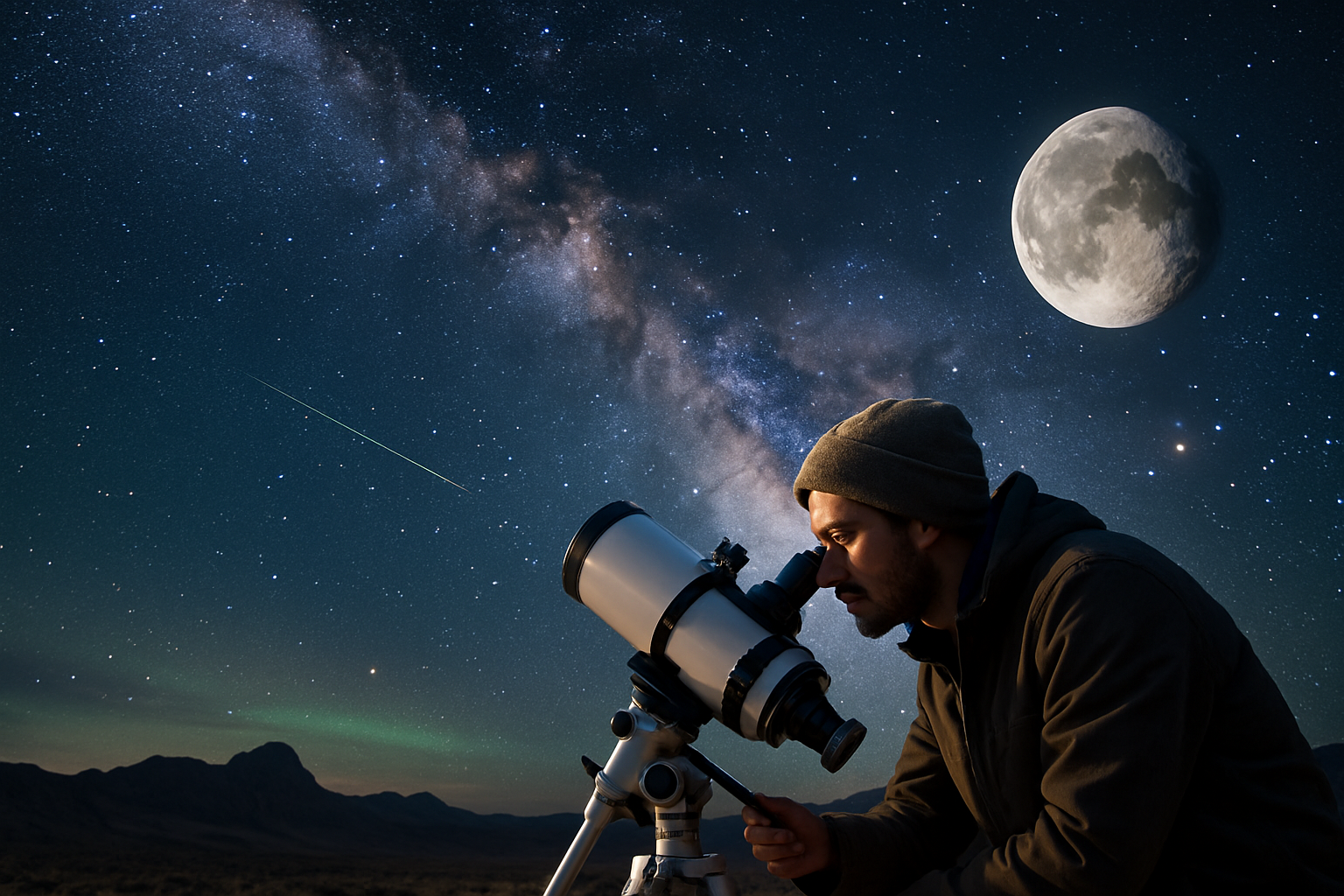Astro-Tourism: Stargazing Adventures Redefining Night-Time Travel
Imagine a journey where the destination is not a place, but a celestial spectacle. Astro-tourism, an emerging trend in the travel industry, is captivating globetrotters with its promise of cosmic wonders and nighttime marvels. This unique form of travel takes adventurers to remote, dark-sky locations, offering unparalleled views of the cosmos and transforming how we perceive nocturnal exploration. As light pollution increasingly obscures our view of the stars in urban areas, astro-tourism provides a gateway to the universe, combining the thrill of travel with the awe of astronomical observation.

These designated areas, ranging from parks and reserves to entire communities, have become hotspots for astro-tourism. They offer visitors the chance to witness celestial phenomena that are often invisible from urban areas, such as the Milky Way, meteor showers, and even the aurora borealis in some locations.
The Science of Stargazing
Astro-tourism is not just about casual observation; it often involves a scientific component that enhances the travel experience. Many dark sky destinations offer educational programs led by astronomers, providing visitors with insights into celestial mechanics, constellations, and the latest astronomical discoveries.
Advanced observatories and planetariums in these locations allow tourists to delve deeper into the cosmos. Some facilities offer the use of high-powered telescopes, giving amateurs the opportunity to observe distant galaxies, nebulae, and planets in detail. This blend of education and exploration adds depth to the travel experience, appealing to both science enthusiasts and curious novices alike.
Cultural Connections Through the Stars
One of the most fascinating aspects of astro-tourism is its ability to connect travelers with ancient celestial traditions. Many cultures throughout history have used the stars for navigation, timekeeping, and storytelling. Astro-tourism destinations often incorporate these cultural elements into their offerings, providing a unique perspective on human history and our relationship with the night sky.
In places like the Atacama Desert in Chile or the outback of Australia, visitors can learn about indigenous star lore and how different cultures interpreted celestial patterns. This cultural dimension adds richness to the astro-tourism experience, bridging the gap between scientific observation and human heritage.
Specialized Accommodations and Services
The growth of astro-tourism has led to the development of specialized accommodations and services catering to stargazers. Hotels and resorts in prime dark sky locations now offer astronomy-themed rooms, rooftop observatories, and even transparent bubble domes for unobstructed night-sky viewing.
Tour operators have also adapted to this trend, creating packages that combine traditional sightseeing with nighttime stargazing excursions. These tours often include transportation to remote observation points, equipment rentals, and expert guides who can navigate both the terrestrial and celestial landscapes.
The Future of Astro-Tourism
As interest in astro-tourism continues to grow, it is likely to have a significant impact on travel patterns and destination development. More regions are expected to pursue dark sky certification, recognizing the economic and environmental benefits of preserving their night skies. This could lead to increased protection of natural areas and a shift towards more sustainable tourism practices.
Technological advancements are also shaping the future of astro-tourism. Virtual and augmented reality technologies are being developed to enhance the stargazing experience, allowing visitors to interact with celestial objects in new ways. Additionally, improvements in astrophotography equipment are making it easier for travelers to capture and share their cosmic encounters, further fueling interest in this unique form of travel.
Stellar Tips for Aspiring Astro-Tourists
-
Plan your trip around lunar phases; new moons offer the darkest skies for optimal stargazing
-
Bring appropriate gear: red-light flashlights, warm layers, and a star chart or astronomy app
-
Allow time for your eyes to adjust to the darkness; it can take up to 30 minutes for full dark adaptation
-
Consider joining a guided tour for access to expert knowledge and specialized equipment
-
Check local weather forecasts; clear skies are essential for successful stargazing
-
Respect the environment and follow Leave No Trace principles to preserve dark sky areas
Astro-tourism represents a unique convergence of science, culture, and adventure travel. By turning our gaze skyward, it offers a fresh perspective on the world and our place in the universe. As more travelers seek out these celestial experiences, astro-tourism is poised to become a significant force in shaping the future of nighttime travel and conservation efforts. Whether you’re a seasoned astronomer or simply curious about the cosmos, the stars are calling—and the journey promises to be nothing short of astronomical.





